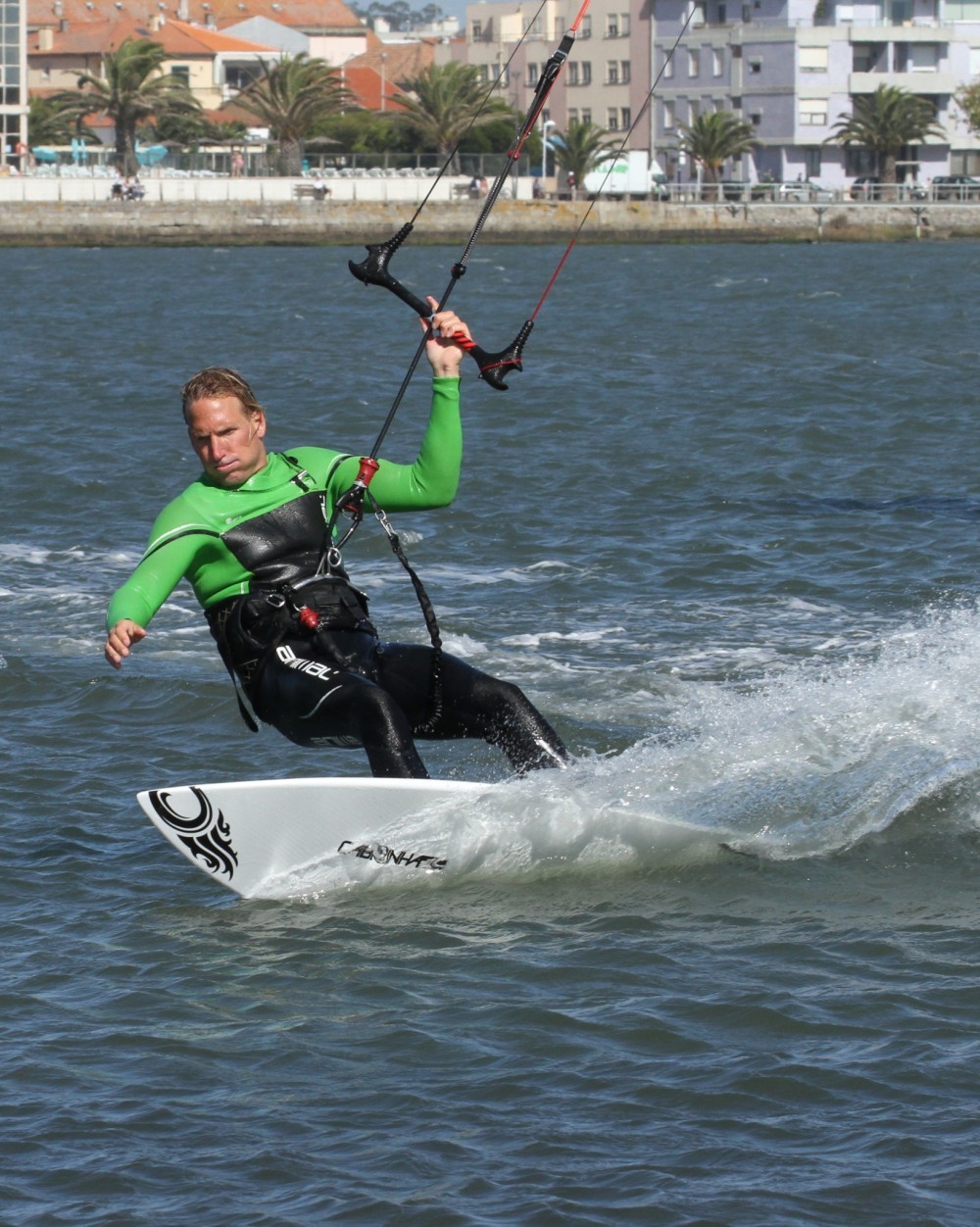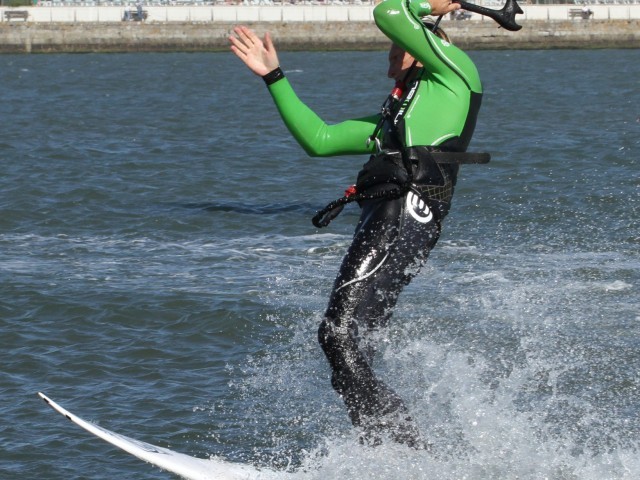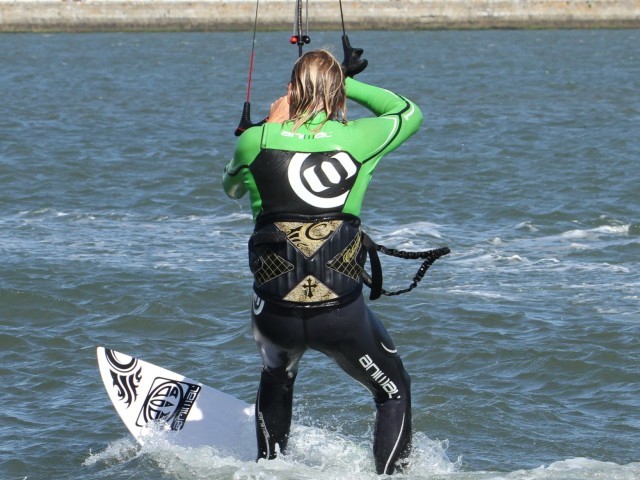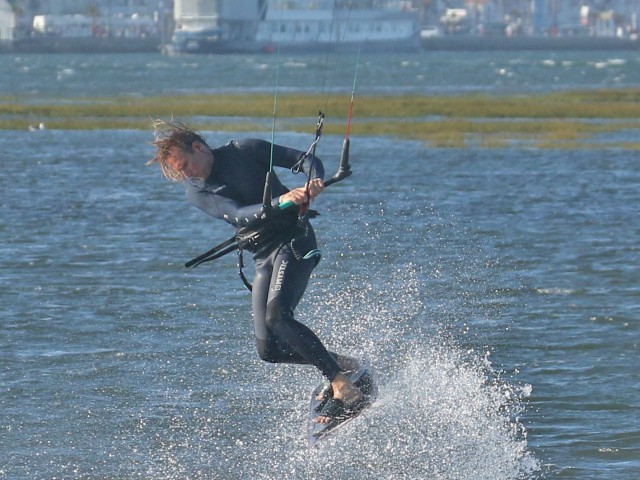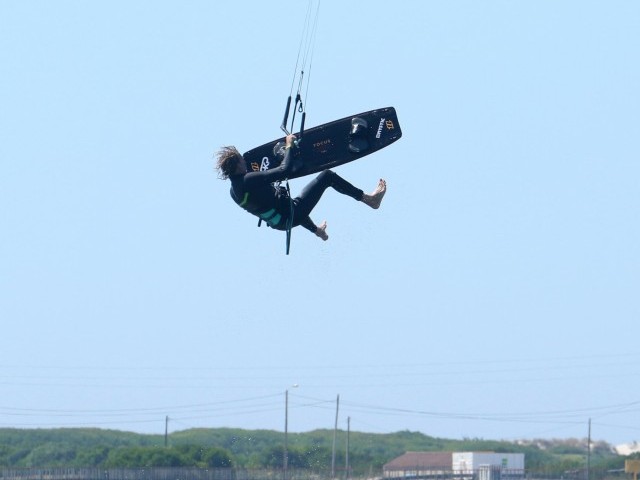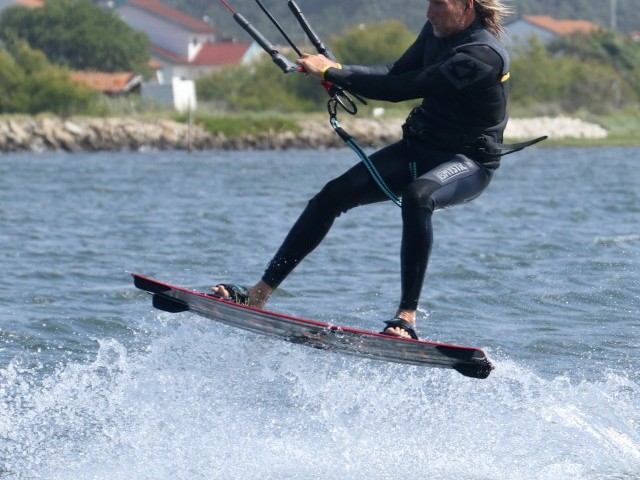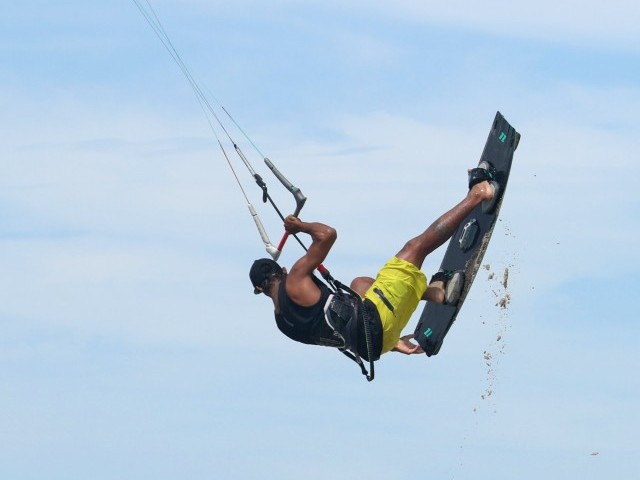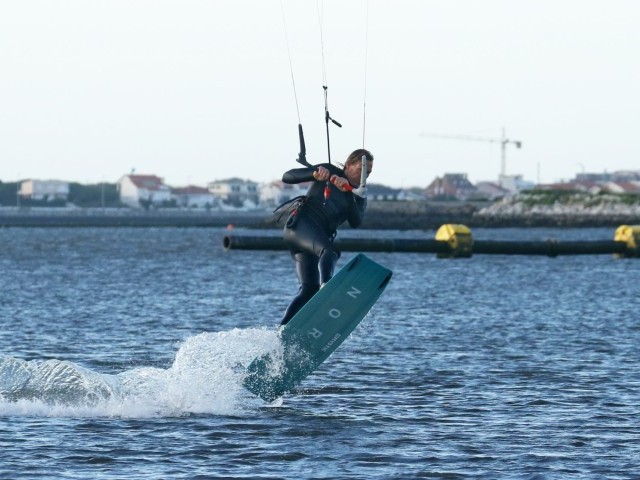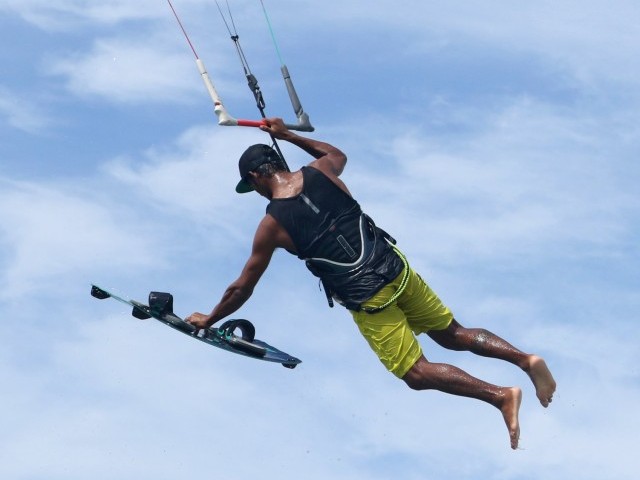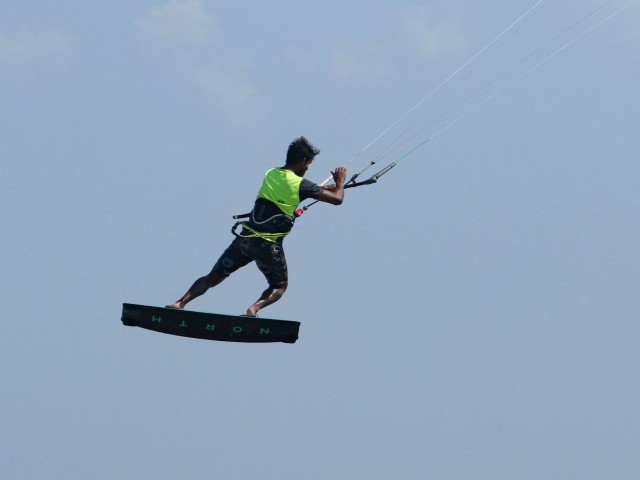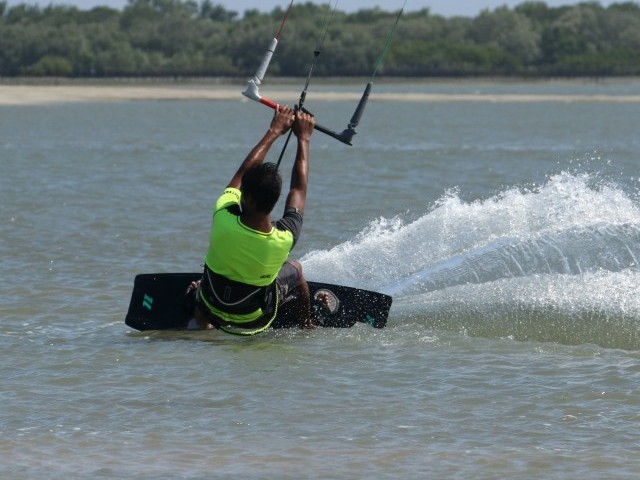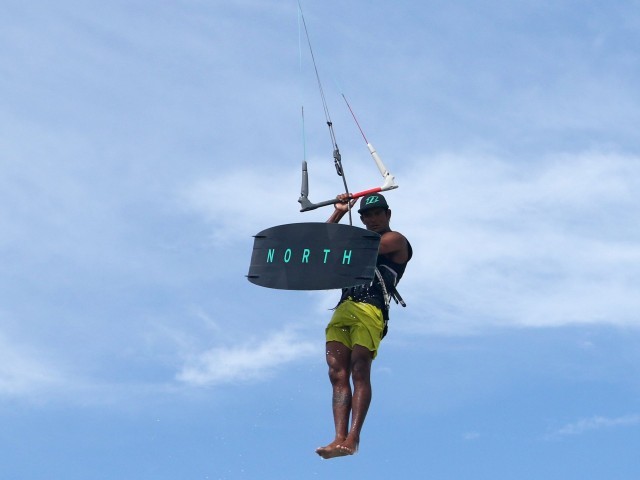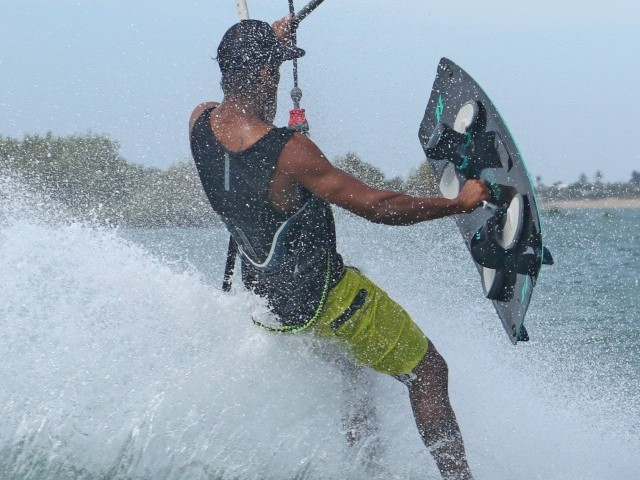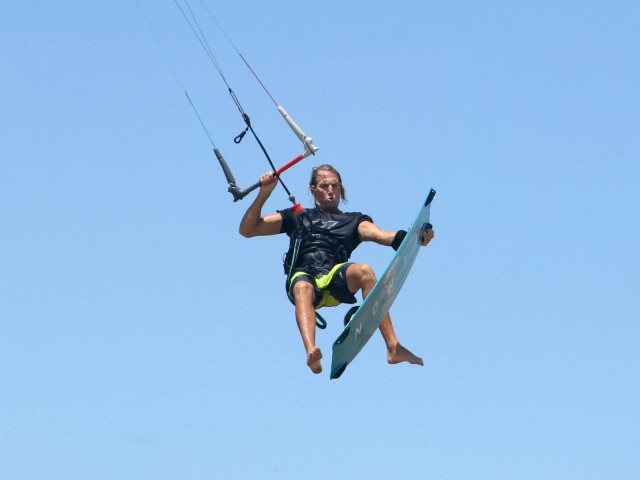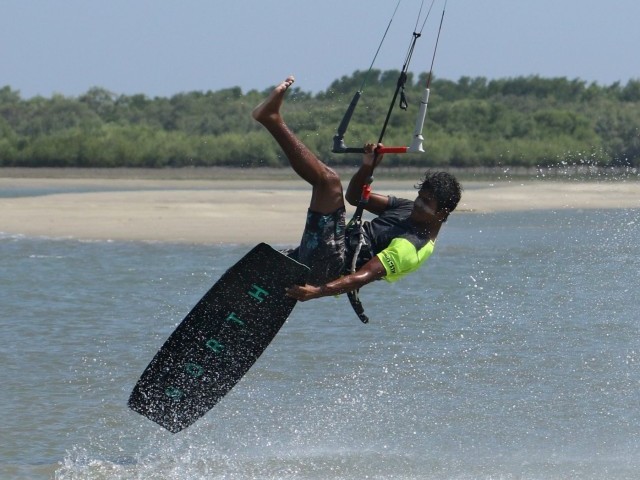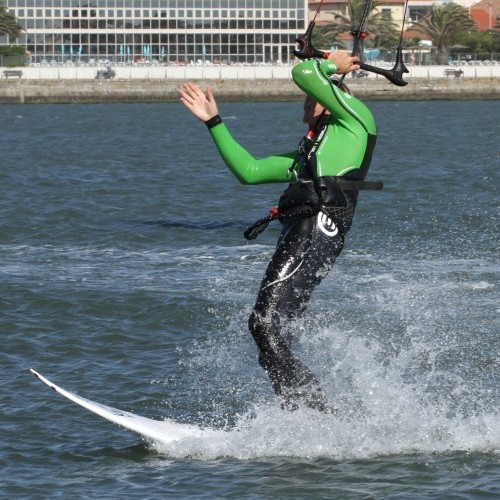
Surf Board Duck Tack
Technique / Advanced
Introduction
A few issues ago we took you through one variation of a directional tack, now its time for the other, the duck tack. If you wanted to compare the two the easiest way to appreciate the difference is to picture the way in which you turn. Previously we turned 180˚ by turning our head downwind and back. In the duck tack we’ll turn through the wind with our head looking forward. In a way we’ll be continuing our carve through the wind, which is what gives this move a smooth feel and look.
Just like the other version, the duck tack is great strapless, strapped or on a race board and once again will help you turn quickly without loosing any ground. The Cuban heel wearers and dancing Queens among you will enjoy the twinkle toed elements of this move, but even us rhythmless Anglo Saxons can get this to work with a bit of understanding.
The Crux
Once you get your head around the idea of what is going on, and convince yourself that you won’t end up with cauliflower ears (because you’ll duck without realising) you have to main hurdles to overcome. 1) Throughout the move you need to keep your body weight aimed as far forward as possible, which is unnatural when you try and carve upwind. 2) You need to get the timing of your kite movement sorted so that you can achieve point 1.
Pic A. This picture is all about getting the elements together and in position so that you are ready to move you feet and execute the tack, with your weight forward, kite up and bar ready. Christian has carved very hard into wind to get the board turning as much as possible. You can see that Christian is reaching forward with his front hand, which he has taken off the bar. By releasing his hand Christian can ditch the pull of the kite and therefore turn more upwind. He can also drift the kite up to 12 o’clock. AND by reaching forward Christian literally pulls his head and shoulders towards the nose of the board and bends his front leg to allow his hips to follow. Finally as he turns Christian brings the bar with him by keeping his trailing elbow in front of his body, pushing his palm through to face the wind. Puffing of the cheeks is optional.
Pic B. The moment. Here it’s all about changing to the other side of the board, without it sinking and obviously without falling in. As the board slows the nose should have already just passed through the wind, or at very least be pointing straight into it and your kite should be at 12 o’clock. Christian has places all his weight onto the ball of his front foot and is pivoting around on it whilst bringing his back foot up to join it. At the same time Christian pushes the bar, his elbow and his shoulders around, whilst pulling in on the bar. The result is that the kite will start to turn and dive in the other direction and Christian will have his body ready for the pull.
Pic C. This picture shows what happens as the power comes on. Having stepped back on the board whilst having his front foot most definitely on the new upwind side of the board, the board will pivot on the tail and the nose will slide off the wind without catching the leeward rail. If you don’t step back you’ll get pulled over the board, and if your front foot crosses the centreline of the board the leeward rail will catch, the board will stop and you’ll get wet.
Sequence 1. Shows the flow of spin from the same angle.
This part of the move you really should practice on land. With your feet apart facing forward and you left arm bent up and in front of you, turn and lean so that your hips are over your right foot and your head and shoulders way in front. Now turn your head and shoulders whilst pushing your elbow through and stepping up with your back foot. You’ll swing around on the ball of your right foot, and then to balance as the left foot plants you can step back with the right foot. Bingo. Because your arm is following you head, your head will turn first and therefore be out of the way of the bar and chicken loop line. Now try the other way.
How to Carve Upwind With Your Weight Forward
Now it’s mighty fine to know all about the critical moments but it’s also rather important to understand the move from beginning to end with regard to board, kite and body. Lets commence with an upwind perspective of the first half from approach to step and follow Sequence 2.
- Pic 1. With his kite around 1 o’clock Christian approaches with some speed on an upwind tack.
- Pic 2. Christian starts to drift the kite up by pulling gently on his back hand, releases his front hand and turns the board into wind by carving on his heels.
- Pic 3. As the kite rises and starts to lift, Christian lets out the bar, edges even harder by driving against his back foot and starts to reach forward with his front hand.
- Pic 4. Pushing forward from his back foot, Christian bends his front leg and moves his hips, shoulders and head forward towards the nose of the board.
- Pic 5. As the board turns up through the wind Christian pushes his palm into wind, drops all his weight onto the ball of his front foot, lifts his back foot and spins his body.
- Pic 6. Christian places his back foot next to his front foot on the other side of the board.
And onwards with Sequence 3.
- Pic 1. With his back foot in position Christian now stands his weight onto it.
- Pic 2. This allows him to lift and step back with his right foot.
- Pic 3. As he does Christian shoulders turn and give him room to duck under the chicken loop line and push his elbow and the bar around.
- Pic 4. With his back foot firmly down Christian can wiggle his front foot across to make sure it’s near the upwind rail of the board.
- Pic 5. Christian pulls down hard on the bar to get the kite diving down.
- Pic 6. And drops his weight back in anticipation of the power.
- Pic 7. As the kite pulls Christian pushes the nose of the board off the wind with his front foot and sails away.
Common Problems
First problem many people have is not turning the board enough into the wind. Speed will help, but crucially you must drift the kite up AND let the bar out. If you hold the bar in or are trimmed badly the kite will pull you and you won’t be able to carve enough.
Second problem is sinking the tail of the board as you try to turn. This can be unpleasant as if the nose lifts too much the wind may blow the board back at you, so be careful. The reason for this is that you’ll be carving upwind with your hips back over your trailing foot. Get them forward. Try to use the action of driving off the back heel and carving the board to push your hips forward. And make sure to release the front hand, so that you can get upwind and away from the bar.
Final problem is getting pulled off the back of the board by the kite as you go for the spin. This happens because you have not drifted the kite up to 12 o’clock. Even if you have your weight forward and do a perfect spin to change body position, with the kite still heading on its original course it will pull you the wrong way. So make sure you get the kite up as you carve, and really push the bar away to stop the kite pulling. Once again make sure that the bar is trimmed in enough to give you the room.
Keystones
- Drift kite up and carve super hard
- Shift weight forward
- Release front hand and let bar out
- Pivot on front foot
- Dive kite hard
This technique article was in Issue 28 of IKSURFMAG.
Related
By Christian and Karine
Christian and Karine have been working together as a coaching team, running improver to advanced kitesurfing clinics since 2003.













